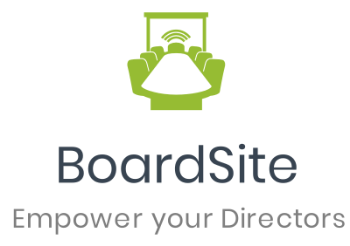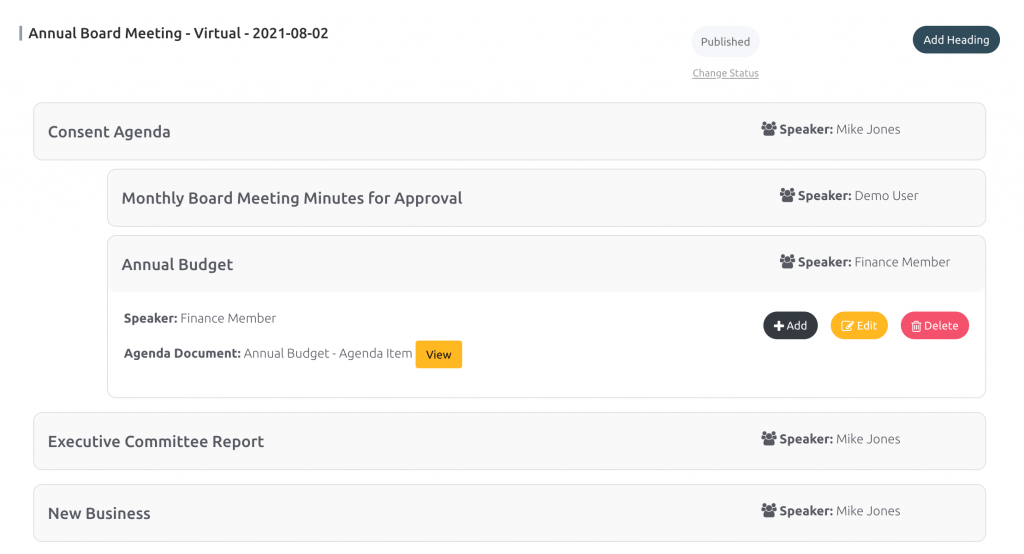In today’s fast-paced world, technology is changing the way we conduct board meetings. One of the most significant areas of improvement is the creation and management of board meeting agendas.
Digital tools and board management software enable organizations to streamline the agenda creation process, enhance collaboration, and adapt to the increasing prevalence of virtual meetings.
Let’s explore how using technology can make board meetings more efficient and effective.

How to Use Digital Tools to Streamline the Board Agenda Creation Process
Creating a board meeting agenda can often feel like a daunting task, but digital tools like a board agenda template can simplify this process significantly.
Here are some ways to leverage technology for smoother agenda creation:
1. Centralized Document Management
Digital tools allow you to store all relevant documents in one place. Board members can easily access the materials they need without wasting time searching through emails or folders. A centralized system ensures that everyone has the same information, which is crucial for effective discussions.
2. Collaborative Editing
Many digital platforms offer collaborative editing features. Multiple board members can contribute to the agenda simultaneously. This collaborative approach not only speeds up the process but also encourages input from all members, leading to a more comprehensive and well-rounded consent agenda.
3. Templates and Automation
Using a board meeting agenda template can save a lot of time when creating agendas. Many digital tools come with pre-designed templates that you can customize for your specific needs. Additionally, some tools allow you to automate certain sections of the agenda based on previous meetings, making it easier to get started.
4. Feedback Mechanisms
Digital tools often include options for board members to provide feedback on the agenda before the meeting. This feature allows everyone to suggest changes or additions, ensuring that the agenda reflects the priorities and concerns of the entire board.
The Role of Board Management Software in Crafting and Sharing Agendas
Board management software is specifically designed to help organizations manage their board activities more effectively making life easier for the board secretary. Here’s how it plays a crucial role in crafting and sharing agendas:
1. Integrated Solutions
Board management software provides an all-in-one platform for creating, sharing, and managing meeting agendas. This integration eliminates the need for multiple tools, making it easier to keep everything organized and accessible.
2. Real-Time Updates
One of the significant advantages of using board management software is that any changes made to the agenda are updated in real-time. This means all board members can access the most current version, reducing confusion and ensuring everyone is on the same page.
3. Action Item Tracking
Many board management solutions include features for tracking action items discussed during meetings. This helps ensure accountability and follow-up on important decisions, making it easier to keep everyone informed about what needs to be done after the meeting.
4. Secure Sharing
Security is a top concern for board meetings, especially when sensitive information is involved. Board management software allows for secure sharing of agendas and related documents, ensuring that only authorized individuals have access to critical information.

How Virtual Meetings Impact Agenda Creation and Board Discussions
The rise of virtual meetings has changed the way boards operate. Here’s how this shift impacts agenda creation and discussions:
1. Flexibility and Accessibility
Virtual meetings offer greater flexibility for board members, allowing them to participate from anywhere. This accessibility can lead to increased attendance and engagement, as members can join without the need for travel.
2. Enhanced Communication Tools
Virtual meeting platforms often come with features like chat functions, polls, and breakout rooms. These tools can enhance discussions and make agenda items more interactive, encouraging participation from all members.
3. Recording and Documentation
One of the benefits of virtual meetings is the ability to record sessions. This provides a valuable resource for reviewing discussions and decisions made during the meeting. Having a recorded meeting can also help in creating accurate minutes, ensuring that everyone is aligned on outcomes.
4. Challenges of Virtual Engagement
While virtual meetings offer many benefits, they can also present challenges in terms of engagement. It’s essential to design agendas that encourage participation and keep members focused. Incorporating interactive elements or designated discussion times can help maintain engagement during virtual meetings.
Leverage Technology for Successful Board Meetings
Using technology to improve board meeting agendas is not just a trend; it’s a necessity in today’s digital age. By leveraging digital tools and board management software, organizations can streamline the agenda creation process, enhance collaboration, and adapt to the growing trend of virtual meetings.
Embracing these technologies not only makes meetings more efficient but also empowers boards to focus on strategic discussions and decision-making, ultimately leading to better governance and organizational success.
Ready to Elevate Your Board Meetings?
Ensure you have a well-organized plan in place for when your Board Chair makes the call to order at your next meeting. Let us help you transform your board meetings into efficient, productive sessions!


